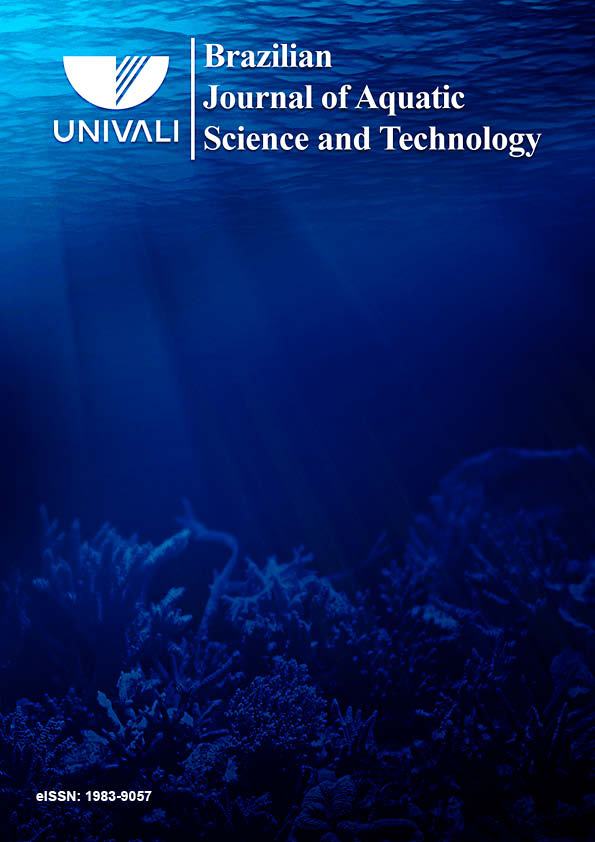A survey of the eutrophication state of an urbanized tropical estuary, the case of the Great Vitória Estuarine System, Brazil.
DOI:
https://doi.org/10.14210/bjast.v20n1.5230Abstract
Although, estuarine ecosystems have an ecological and economical importance as they have a high biological productivity and occur within a unique and dynamic environment, they have been subjected to anthropogenic alterations. The Great Vitória Estuarine System (GVES), Espírito Santo State, Brazil, is not an exception, as urbanization is growing around it with a high quantity of sewage been added to the system. In order to evaluate the eutrophication state as well as the meiofauna response to it, several parameters in both sediments and in the water column were assessed. Orthophosphate, nitrite, nitrate, ammonia, chla and Fecal Coliform counts (FC) ranged from 0.2 to 3.2 μM, 0.25 to 1.14 μM, 1.83 to 0.19μM, 4.19 to 49.23 μM, 0.61 to 6.72 μg/L and 14 to 5.0x104 MPN/100 mL of water, respectively. These results showed that the GVES is under an eutrophication process and that the Passagem Channel experienced the largest impacts. Sewage plays an important role in this eutrophication process as indicated by PCA and correlations tests. The density of meiofauna showed similar values to those found in environments with similar levels of anthropogenic stress. This multi-approach evaluation revealed several aspects of the impacted estuary and could be used as an important tool to manage better the estuary.
Downloads
Published
Issue
Section
License
Authors who publish with this journal agree to the following terms:
1. Authors retain copyright and grant the journal right of first publication with the work simultaneously licensed under a Creative Commons Attribution License that allows others to share the work with an acknowledgement of the work's authorship and initial publication in this journal.
2. Authors are able to enter into separate, additional contractual arrangements for the non-exclusive distribution of the journal's published version of the work (e.g., post it to an institutional repository or publish it in a book), with an acknowledgement of its initial publication in this journal.
3. Authors are permitted and encouraged to post their work online (e.g., in institutional repositories or on their website) prior to and during the submission process, as it can lead to productive exchanges, as well as earlier and greater citation of published work (See The Effect of Open Access).

